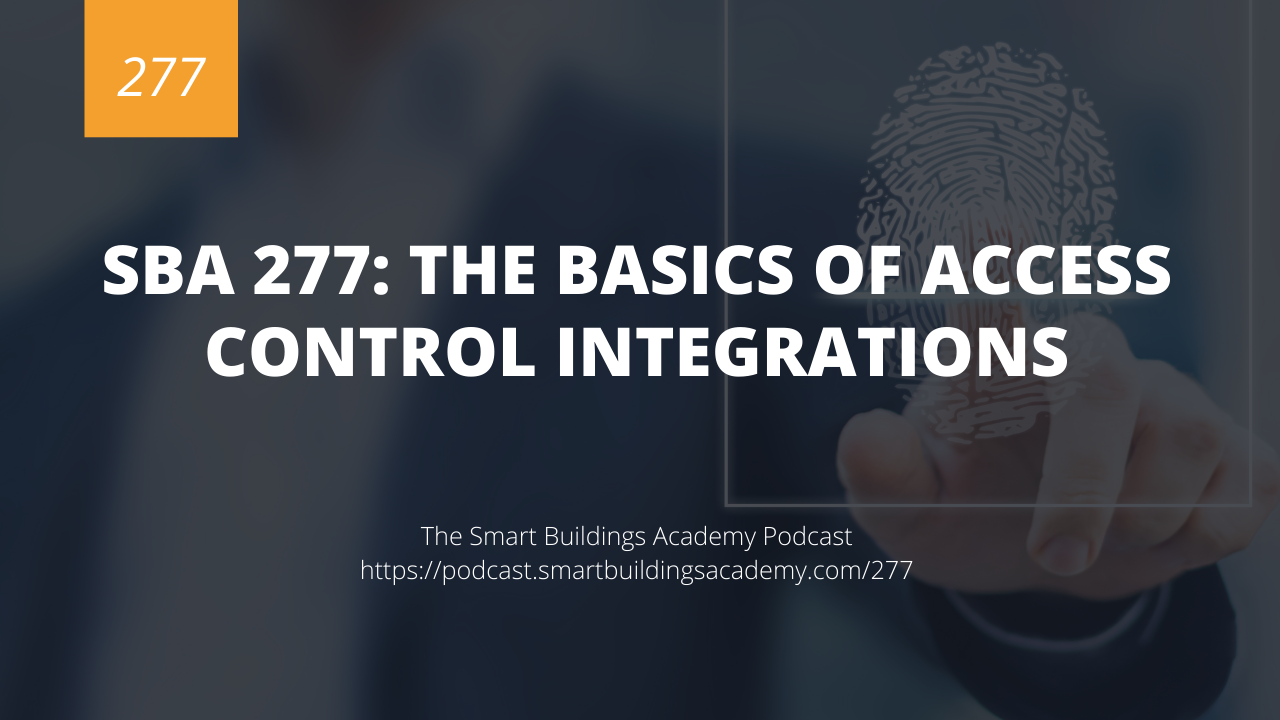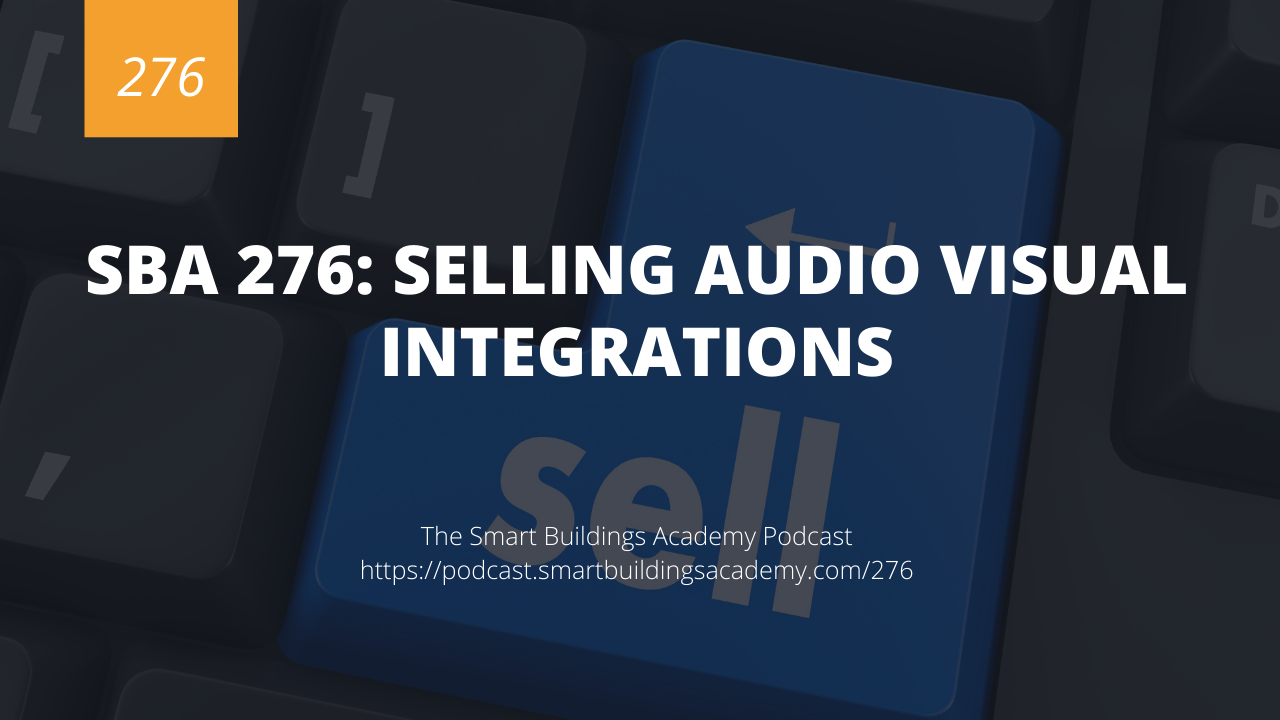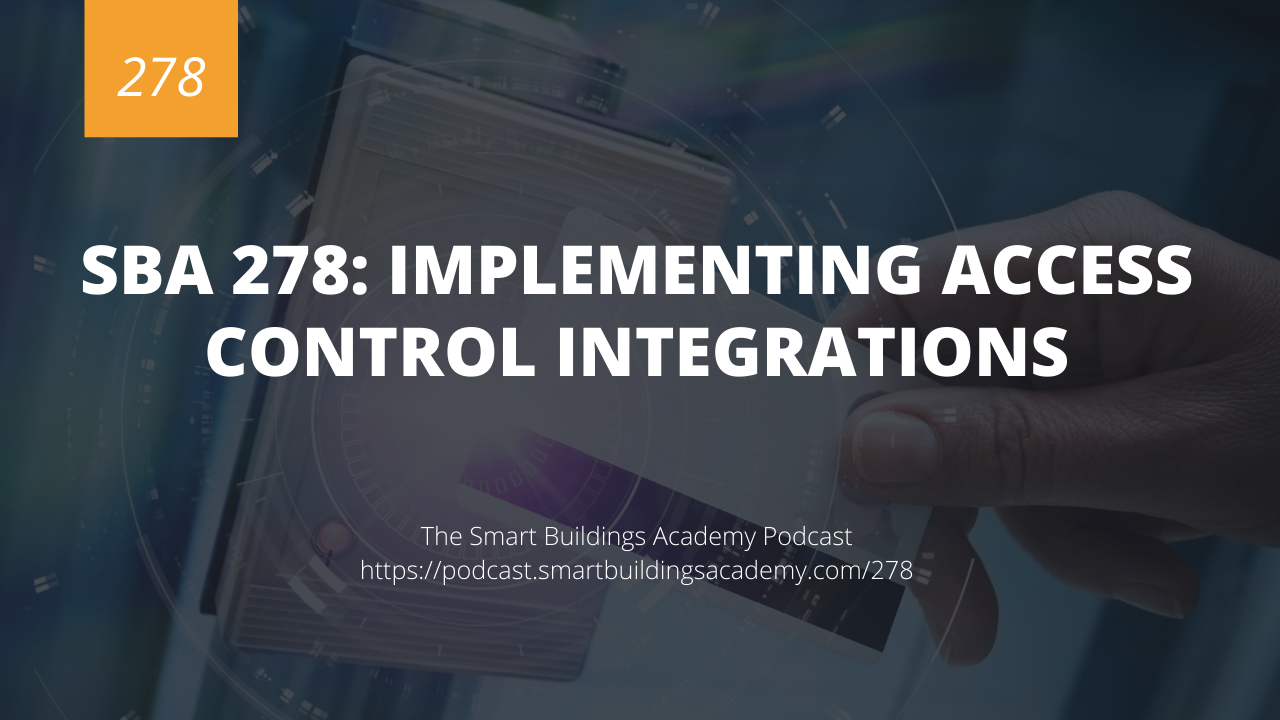In this episode we explore the complex world of access control integrations. You will learn the basics of access control systems and the basics of approaching access control integrations.
Click here to download or listen to this episode now.
Resources mentioned in this episode


Transcript
Phil Zito 0:00
This is the smart buildings Academy podcast with Phil Zito Episode 277. Hey folks, Phil Zito here and welcome to Episode 277 of the smart buildings Academy podcast. In this episode, we are going to be discussing the basics of access control integrations. This episode follows up on previous episodes, starting at Episode 271. And going all the way to this one where we've been talking about integrations. So if you are at all interested in integration, then I really encourage you to go back and listen to those past episodes because they really lay down a lot of core concepts that folks need to know in integration. Alright, everything we discuss in this episode will be found at podcast smart buildings academy.com, forward slash 277. Once again, that's podcast at smart buildings Academy comm forward slash 277. Alright, so here's the deal with access control integrations. And I've went in order of complexity as far as integrations go. In our lightning integrations, we started off with discussing kind of integrations that they're not terribly complex, I would argue that lighting is not a very complex integration, right? It typically is either BACnet interface or physical interface. And that's about it. Then we moved on to audio visual where things get a little bit more interesting with API's and things like that. Now we're moving into access control. And under access control, while we are primarily focused on physical access control, so we're talking about card readers and electrical locks that are automated by controllers, typically room controllers, or zone controllers that then head back in to a supervisory device which head into a server. And that server typically is known as a piece of server, physical security Information Management Server. And that server will go and Ashley's physical security information management software, but pcem is typically going to be existing in medium to large sites, right? Not typically in small sites. And what we're looking to do with our integrations, right, we've got to start we got to think about our use cases here. So what use cases could we possibly have with smart locks and card readers? Well, one of them is occupancy right, being able to determine if a space is occupied, being able to determine if there is something going on within that space so that we could properly condition the space, we could properly light the space, we can do all sorts of things. Additionally, when we start to look at our more advanced enterprise use cases, there's things we can do with access control, like in the healthcare space, unlocking doors, or locking doors from a physical security perspective. But that's kind of independent of building automation, although it is tied to integration. Now, in my experience, integrating access control systems is one of the more difficult integrations to do not because the integrations themselves are necessarily that hard. From a data set perspective, the integrations are pretty easy. you've cut a zone, a space, a room controller, and or sorry, a lock and a carburetor, that's typically all you've got, it's not really that terribly complex. where it becomes complex is there's still very much a proprietary nature to access control systems. So when we look at access control systems, and we look at integration, what we're looking at is we are primarily looking at those. What's the word I'm looking for here?
Phil Zito 4:03
We're looking at proprietary protocols. That's basically all I could think of proprietary protocols, and drivers that we have to get access to from the access control manufacturer. And sometimes we'll get those from the access control manufacturer. Sometimes some systems like tritium will have drivers that are developed in conjunction with the access control manufacturer. But a lot of the times that is the only way you're going to get the data out. They don't tend to have API's, they don't tend to have BACnet interfaces. It is truly just drivers. And that usually constrains you to only working with that vendors building automation system because that vendors building automation system has the driver to work with that vendors access control system. So it's something you want to be really cognizant of. If you are trying to do integration with an access control system. This episode is actually going to be a pretty short episode. Because of that. So what I'm going to talk about and I'll dive deeper in next episode for the rest of this episode is looking at the integration, figuring out what we're going to integrate and figuring out the how. And then we'll talk about the how in the next episode. So the first thing is, I've got to figure out what access control system it is. And that is actually surprisingly difficult going and going to these companies websites and figuring out the brand of their access control system, if you don't work with it. I will tell you from past experience and current experience, I find that quite difficult because their data is oftentimes not organized well. And the data we need the integration guides, the data point guides, things like that is often buried under mounds of marketing data. So what I tend to find is that you can either go direct to the OEM, or if you're buying through a distributor or working through a distributor, you can go to that distributor, and hopefully, they'll be able to connect you with what is the system name and the system documents. And that's the first step to even figure out if we can integrate, or if there's a proprietary driver that we have to license. That's the first thing we got to figure out. Right? What form and this is something we've beat to death in the past podcast episodes, how can we pull data out of the system? What can we do to pull the data out of that access control system, then once we know that, you know, like, if you have a system like tritium, which has tons of different access control drivers, it becomes pretty simple. You license the access control driver If required, otherwise, you you go and register the access control driver, add it to your Jace and you connect it to the trunk. And you pull the data in, right? Pretty straightforward, pretty simple. The data sets themselves are not terribly difficult to work with. Although you do need to understand what the data sets mean. Because sometimes, they will just go by room numbers, sometimes they will have a just a generic number that makes no sense. And you have to have a way of pairing that number up to the actual space or the zone that you're controlling. So in my opinion, when it comes to access control, and in my experience when it comes to access control, the two most difficult parts are doing the initial research to figure out what system it is, what version it is, what licenses it supports, what drivers it supports. And then the second most difficult thing to do is going to be going and actually figuring out Okay, I've got this kind of system, how do I now go and actually understand what's the data inside it. And so doing the data matching, going and matching your data from the access control system to your zones to your building automation system. That is going to be the two difficult areas, the actual integration piece itself is not typically pretty difficult. And we'll talk through that in the next episode. Alright, so there you have it. An overview of access control systems pretty straightforward. If you'd like to add anything to this, I'd encourage you to go to podcast at smart builders Academy comm forward slash 277. Once again, that's podcast at smart buildings academy.com four slash 277. And leave your comments there and let me know what you think about access control. Do you find it to be one of the more difficult forms of integration due to the just lack of available data and the proprietary nature of most access control drivers? Or have you found it to be relatively simple because of the simplified data sets and the ease of integration once you actually figure out what you are integrating? Let me know in the comments at podcast at smart buildings khadem e comm forward slash 277 Thanks a ton and take care





